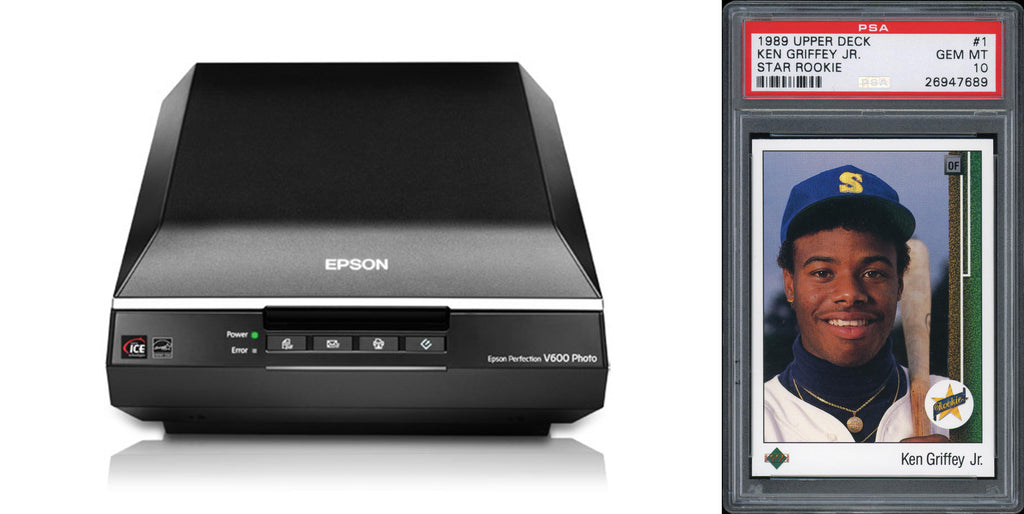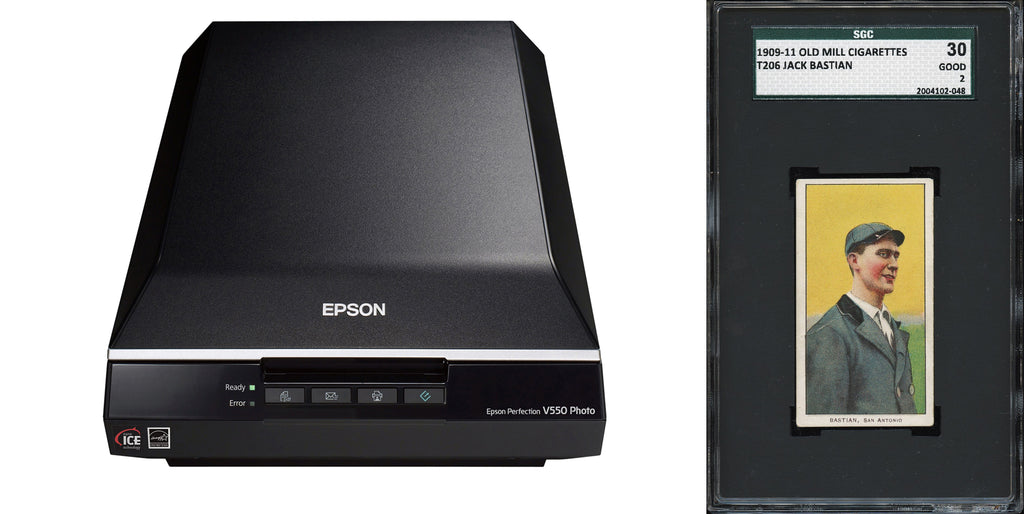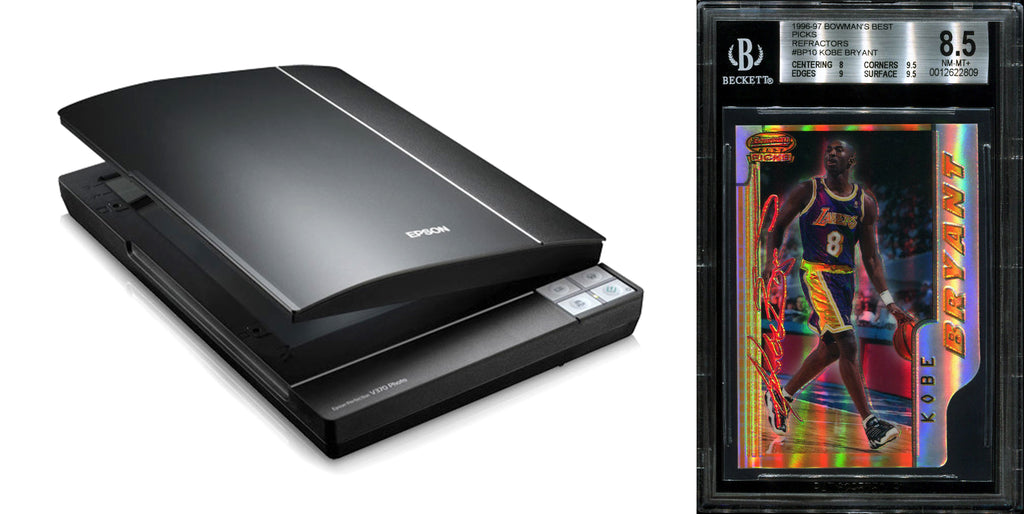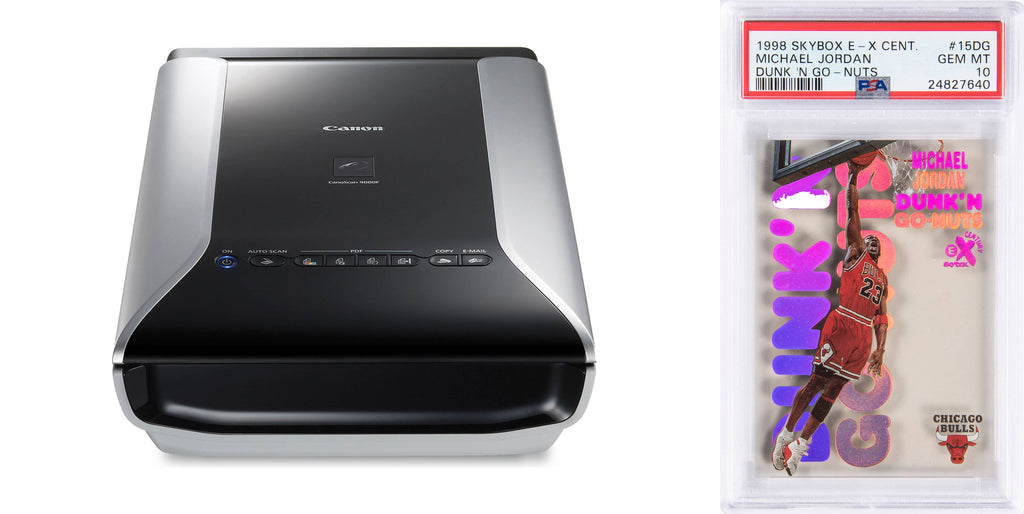Best Scanners for Graded Sports Cards
In the world of Sports, Magic: The Gathering, Pokémon, and other trading cards, the importance of high-quality digital representations cannot be overstated. Whether you're a collector aiming to archive your cards, a seller looking to list cards for sale, or a player wanting to share your deck online, the clarity, color accuracy, and detail of the scans make a significant difference. This guide dives into the best scanners for these purposes, with a spotlight on why flatbed scanners reign supreme. Protect your collection with high-quality scans—shop trading card cases today!
Why Opt for Flatbed Scanners?
Flatbed scanners are widely recognized as the best choice for scanning trading cards, sports cards, and other collectible cards. Their superiority stems from a variety of features that cater specifically to the needs of collectors, sellers, and enthusiasts alike. Not only do they offer consistent lighting, which is paramount for capturing the true colors and intricate details of the cards, but their design allows for the ability to effectively scan the depth of graded cards.
The significance of consistent lighting cannot be overstressed. It plays a pivotal role in ensuring that the scanned image accurately reflects the card's original hue, saturation, and vibrancy. This is especially important for collectors and sellers who aim to showcase the card in its most authentic form. Unlike other types of scanners that might cast shadows or create uneven lighting, flatbed scanners illuminate the entire surface evenly, ensuring that each scan is a true representation of the card.
In contrast to other scanner types that can produce shadows or uneven lighting, flatbed scanners offer the capability to accurately capture the depth of graded cards. Graded cards, which have been evaluated and encapsulated by professional grading services, require a scanning solution that can accommodate their increased thickness and often reflective surfaces. Flatbed scanners excel in this area, providing the depth of field needed to capture the entirety of the card, including its case. This capability is invaluable for sellers who specialize in graded cards, as it allows them to present their items in the best light, showcasing not just the card itself but the quality and integrity of the graded slab.
The design of flatbed scanners, featuring a flat, stable surface, is another reason for their preferred status among trading card enthusiasts. This design allows for the easy placement and alignment of cards, reducing the risk of bending or damaging delicate edges or surfaces. This aspect is particularly crucial when handling rare, vintage, or highly valuable cards where maintaining condition is paramount. The gentle scanning process of a flatbed scanner means that even the most fragile items can be digitized without fear of harm.
Adjustable resolution settings further elevate the utility of flatbed scanners in the realm of card collecting and selling. High-resolution scans are indispensable for capturing every minute detail of a card, from the texture of the cardboard to the fine print of an athlete’s signature. This level of detail is not just about aesthetics; it's critical for buyers who rely on digital images to assess the condition and authenticity of a card before making a purchase. The ability to adjust the resolution allows sellers to tailor their scans to the specific needs of each card, ensuring that potential buyers receive the most accurate and detailed view possible.
Top Flatbed Scanners for Card Scanning
Epson Perfection V600 Photo Scanner

The Epson Perfection V600 Photo Scanner has distinguished itself in the market, particularly when it was awarded the prestigious 2010 Technical Image Press Association (TIPA) award for being the best photo scanner available at the time of its release. This accolade underscores the scanner's superior quality and performance in capturing high-resolution images. The Epson V600 stands out as an exceptional flatbed scanner designed to produce vivid, detailed scans of various items, including but not limited to, slabbed sports cards. It boasts of capturing the intricate depth and detail inherent in all types of sports cards, ensuring that collectors and enthusiasts can enjoy high-quality digital reproductions of their prized possessions.
The design of the Epson V600 emphasizes efficiency and user convenience, featuring remarkably low power consumption. This not only makes it an eco-friendly choice for users but also ensures cost-effectiveness in the long run. Furthermore, the scanner is capable of delivering prompt scans without necessitating any warm-up time, a feature that significantly enhances its usability and productivity. This means that users can quickly digitize their sports cards collection without any unnecessary delays, making the Epson V600 a practical choice for both amateur and professional collectors.
A key highlight of the Epson Perfection V600 scanner is its use of Digital ICE technology. This sophisticated feature employs infrared light to accurately identify and then eliminate dust or particles from the scanned image. This function is critical for maintaining the original quality and visual appeal of the item being scanned, yet it still allows for the clear identification of any flaws on the actual card. These attributes render the Epson V600 more than just a scanner; it becomes an indispensable asset for sports card collectors who strive to preserve and display their collections at their finest.
Epson Perfection V550 Photo Scanner

The Epson Perfection V550 Photo Scanner, a standout in the realm of digital imaging, offers an impressive blend of high-resolution scanning capabilities and user-friendly features, making it a favorite among photographers, collectors, and digital archivists alike. This scanner is renowned for its ability to produce exceptionally detailed and color-accurate scans, ensuring that every nuance of the original is captured with fidelity. Whether it's for listing cards on eBay, archiving collections, or digitizing photos, the V550 delivers quality that meets the demands of both serious collectors and enthusiastic hobbyists.
A standout feature of the Epson Perfection V550 scanner is its incorporation of Digital ICE technology. This advanced capability utilizes infrared light to precisely detect and remove dust and particles from the scanned image. This process is essential for preserving the original integrity and aesthetic of the scanned item, while still enabling the clear recognition of any imperfections on the actual card. Such characteristics make the Epson V550 more than merely a scanner; it transforms into a vital tool for sports card enthusiasts aiming to showcase and maintain their collections in pristine condition.
The scanner's design also emphasizes ease of use, featuring a straightforward setup and an intuitive interface that accommodates users of all skill levels. Its inclusion of a built-in transparency unit allows for the scanning of slides, negatives, and medium format panoramic film, further extending its utility to encompass a wide range of scanning needs. This makes the V550 a versatile tool, capable of handling various types of media with ease. Preserve the value of your PSA graded cards with the best scanning solutions.
Epson Perfection V370 Photo Scanner

The Epson Perfection V370 Photo Scanner, despite being the oldest model among its contemporaries and no longer in production, continues to hold a special place in the hearts of enthusiasts and collectors alike. This enduring appeal is a testament to its robust design and the exceptional quality of scans it produces, making it a valuable asset for those in possession of this model. The V370, distinct from its successors, does not feature the Digital ICE technology. While at first glance, this might seem like a shortcoming, it actually serves as a unique advantage for a specific niche of users. Collectors, particularly those with a keen interest in refractor cards, often seek out the V370 for its unparalleled ability to capture the unique light effects of these cards, enhancing their visual appeal in digital form. This capability is especially valued as newer models tend to struggle with replicating this effect, making the V370 a sought-after item for this purpose.
Despite its age, the Epson V370 boasts impressive specifications that contribute to its continued relevance and popularity. It offers high-resolution scanning capabilities, ensuring that every detail, no matter how minute, is captured with clarity and precision. This level of detail is crucial for collectors and professionals who demand the highest fidelity in their digital reproductions, whether for archival purposes, professional presentations, or digital showcases.
The design of the V370 emphasizes not just functionality but also user convenience. Its compact form factor makes it an ideal choice for setups with limited space, without compromising on the quality of the output. The scanner is celebrated for its straightforward setup process and ease of use, making it accessible to users of all skill levels. Whether for a seasoned collector or a newcomer to digital archiving, the V370 provides a hassle-free scanning experience.
In terms of affordability, the Epson V370 presents itself as a cost-effective solution for high-quality scanning needs. With a price point of around $240 on platforms like eBay or Amazon, it offers great value for those looking to invest in a reliable scanner that performs exceptionally well in specific applications, such as capturing the nuanced effects of refractor cards.
Canon CanoScan 9000F Mark II

The Canon CanoScan 9000F Mark II has made a significant impact in the scanner market, offering exceptional quality and versatility for users looking to digitize a wide range of documents and images, including detailed sports cards. Its capability to capture the nuances and vibrant colors of each card makes it a favorite among collectors and enthusiasts eager to obtain high-quality digital reproductions of their valuable items.
Designed with efficiency in mind, the CanoScan 9000F Mark II is notable for its low power consumption, making it an environmentally friendly option that doesn't sacrifice performance. One of its standout features is the ability to deliver fast scans without the need for a warm-up period, streamlining the digitization process and enabling users to quickly and easily archive their collections.
A key aspect of the CanoScan 9000F Mark II's appeal is its use of FARE Level 3 technology, which employs infrared light to detect and automatically correct for dust and debris on the surface of the scanner. This ensures that the digital images remain true to the original's quality, while still highlighting any imperfections that are part of the card's history. This balance of maintaining authenticity while providing a clean, clear image makes the CanoScan 9000F Mark II an essential tool for sports card collectors.
Moreover, the CanoScan 9000F Mark II is praised for its adaptability, offering high-resolution scans that bring out the depth and detail of any item it scans. Whether it's sports cards, photographs, or even negatives and slides, this scanner handles them all with ease, thanks to its comprehensive range of features and attachments.
Why Resolution and Software Matter
When it comes to listing trading cards for sale, the quality of the scan, particularly its resolution, plays a crucial role in attracting potential buyers. A high-resolution scan reveals finer details and textures, enabling buyers to closely examine and accurately gauge the card's condition. This level of detail is vital in the collectibles market, where the condition can significantly impact a card's value.
Moreover, the use of software enhancements like color correction and dust removal can substantially improve the visual quality of the scans. Color correction ensures that the scanned image faithfully represents the card's original hues, making it more vibrant and true to life. Dust removal, on the other hand, cleans up any specks or imperfections on the scan, presenting a cleaner and more polished image. These enhancements not only make the card more visually appealing but also instill confidence in buyers about the care and attention given to the card's preservation.
Together, a high-resolution scan combined with thoughtful software enhancements serve to elevate the presentation of the card. This not only makes the card more attractive to potential buyers but also helps in conveying the seller's professionalism and commitment to quality. In the competitive market of trading card sales, these factors can be the difference between making a sale and missing an opportunity.
Tips for Scanning Cards
Ensure the Scanner Glass is Clean: A clean scanning surface is critical for clear, detailed images. Dust, fingerprints, or smudges can obscure important features of the card. Regularly clean the glass with a microfiber cloth and a bit of glass cleaner or isopropyl alcohol to remove any particles or residues that could affect scan quality.
Use a Black Background for Contrast: A black background can dramatically improve the scan quality by enhancing the card's edge detection and making its colors more vibrant. For an added clarity boost, scan in a dim environment with the scanner's lid open to minimize external light interference, focusing the scanner's light directly on the card.
Adjust Resolution Based on Need: The resolution should be chosen based on the card's significance. High-value or rare cards warrant higher resolutions (600 dpi or more) to capture every detail. For general or bulk scanning, a standard resolution (300 dpi) efficiently balances quality with file size, suitable for most needs.
Optimize File Size for Web: Since high-resolution scans can be large and slow to load online, optimizing images for web use is crucial. This involves reducing file size while maintaining enough detail for viewers to examine the card thoroughly. Using image editing software, adjust the compression level, and consider the appropriate format (JPEG for a balance of quality and size, PNG for detailed images) to ensure fast loading times without sacrificing image quality.
Conclusion
In the world of trading cards, whether it’s sports, Magic: The Gathering, or Pokémon, the quality of your digital images can make a big difference. This guide has highlighted why flatbed scanners are a top choice for getting the best scans of your cards. They excel in providing even lighting and capturing every tiny detail, which is especially important for graded cards. We've looked at some of the best flatbed scanners out there, focusing on their high resolution and software features that help make your cards look great online. Plus, we've shared some handy scanning tips, like keeping your scanner clean and adjusting the resolution based on what you're scanning, to help you get the best possible results. Whether you're looking to sell your cards, archive your collection, or just show off your deck online, the right approach to scanning can really showcase your cards at their best.
Upgrade your graded sports card case and capture every detail—start now!

Leave a comment